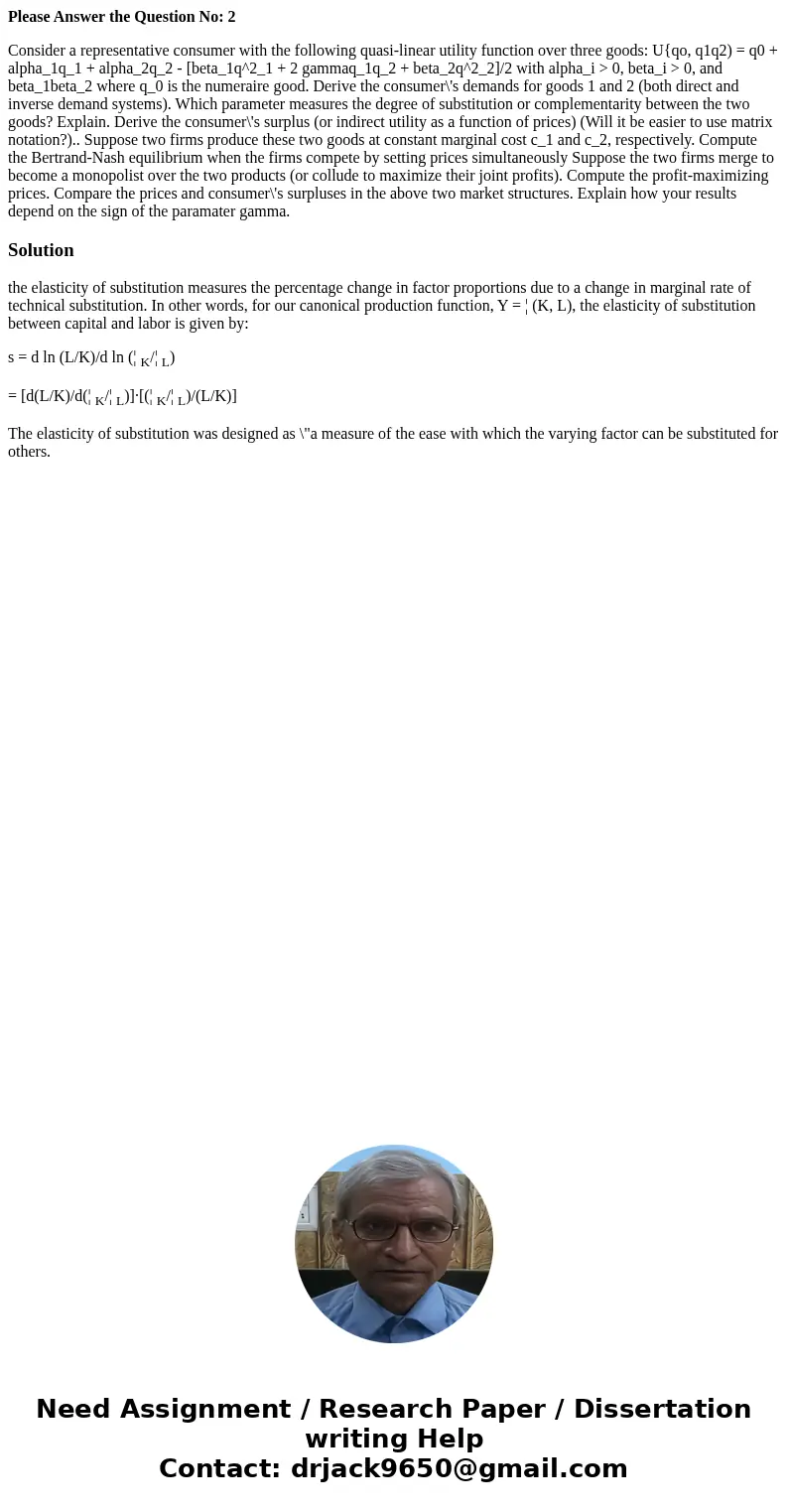Please Answer the Question No 2 Consider a representative co
Please Answer the Question No: 2
Consider a representative consumer with the following quasi-linear utility function over three goods: U{qo, q1q2) = q0 + alpha_1q_1 + alpha_2q_2 - [beta_1q^2_1 + 2 gammaq_1q_2 + beta_2q^2_2]/2 with alpha_i > 0, beta_i > 0, and beta_1beta_2 where q_0 is the numeraire good. Derive the consumer\'s demands for goods 1 and 2 (both direct and inverse demand systems). Which parameter measures the degree of substitution or complementarity between the two goods? Explain. Derive the consumer\'s surplus (or indirect utility as a function of prices) (Will it be easier to use matrix notation?).. Suppose two firms produce these two goods at constant marginal cost c_1 and c_2, respectively. Compute the Bertrand-Nash equilibrium when the firms compete by setting prices simultaneously Suppose the two firms merge to become a monopolist over the two products (or collude to maximize their joint profits). Compute the profit-maximizing prices. Compare the prices and consumer\'s surpluses in the above two market structures. Explain how your results depend on the sign of the paramater gamma.Solution
the elasticity of substitution measures the percentage change in factor proportions due to a change in marginal rate of technical substitution. In other words, for our canonical production function, Y = ¦ (K, L), the elasticity of substitution between capital and labor is given by:
s = d ln (L/K)/d ln (¦ K/¦ L)
= [d(L/K)/d(¦ K/¦ L)]·[(¦ K/¦ L)/(L/K)]
The elasticity of substitution was designed as \"a measure of the ease with which the varying factor can be substituted for others.

 Homework Sourse
Homework Sourse